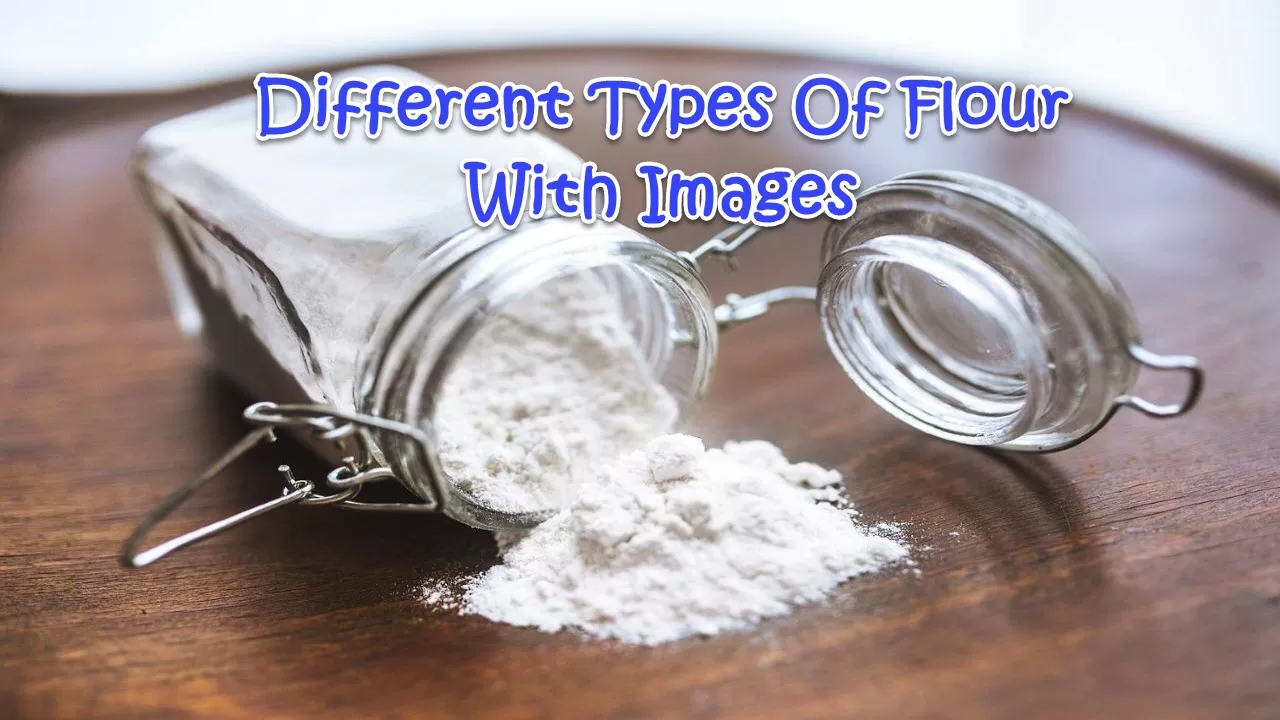Do you enjoy making pastries like bread, cake, or biscuits? If so, you’ve come to the correct place. We are all aware that flour is a necessary ingredient in the preparation of these delectable delights.
There are numerous different varieties of flour that are used for specific kinds of baked goods, even though many recipes call for all-purpose flour.
You are certainly already familiar with several of these types of flours, but you may not even be aware of all of them.
Check out the different types of flour in this post. Scroll down and read on if you’re interested.
Types Of Flour
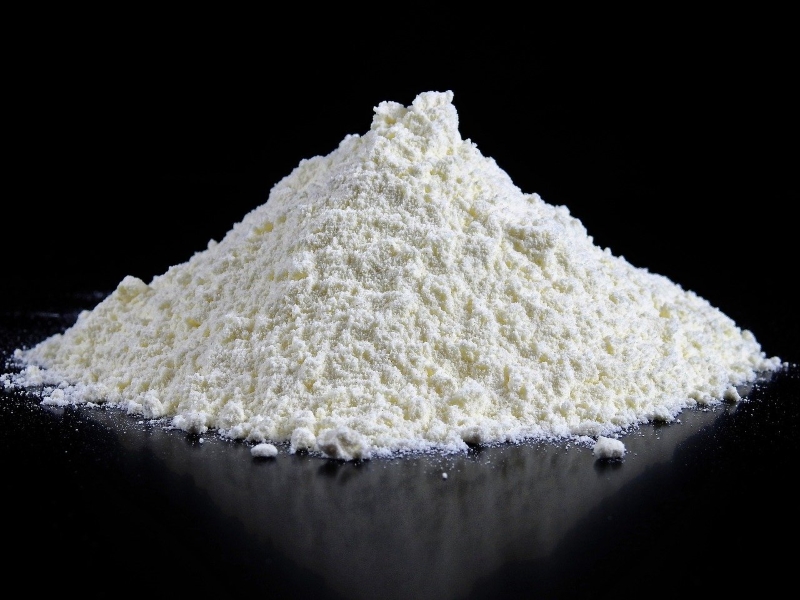
What Is A Flour?
Let’s define a flour first before moving on to the actual topic. A powder called flour is created by pulverizing uncooked grains, roots, beans, nuts, or seeds. Many different dishes can be prepared with flours. The main component of bread, a staple diet in many cultures, is cereal flour, primarily wheat flour. Since ancient times, corn flour has been significant in Mesoamerican cuisine and is still widely used today. In northern and central Europe, rye flour is a component of bread.
The many types of flour are listed below.
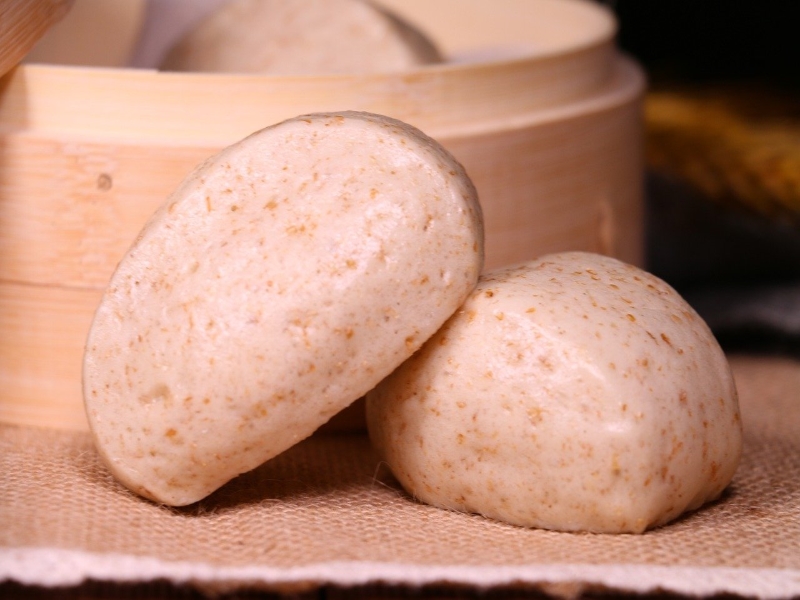
1. Whole Wheat Flour
In UK, whole wheat flour is called wholemeal flour. It is a fundamental dietary ingredient that is made by grinding or mashing the whole wheat grain, commonly referred to as the wheatberry. When making bread and other baked goods, whole-wheat flour is often combined with lighter “white” unbleached or bleached flours, that have been treated with flour bleaching agents in order to replace nutrients, particularly fiber, protein, and vitamins, as well as texture and body to the white flours that may have been lost during milling and other processing to the final baked goods or other foods. Whole wheat flour usually has a protein content around 14 percent.
Generally speaking, before it is being ground, wheat kernels are divided into three components: endosperm, germ, and bran. Whole wheat flour contains all three components, as opposed to standard white flour, which only contains milled endosperm. This results in a denser texture and nutty taste.
Your baked items will turn out with a nicer color and a more nutty flavor when you use whole-wheat flour. They are excellent in pancake, banana bread, waffle, and muffin recipes. You can also try mixing whole wheat flour with all-purpose flour.
Whole wheat flour can be kept for up to three months in an airtight container in a cool, dry environment. The jar will keep up to a year in the freezer if you desire a longer shelf life of your whole wheat flour.

2. Bread Flour
It is pleasurable to munch sourdough bread. The strongest of all the flours and having a protein concentration of 12–14%, bread flour contributes significantly to that texture. The additional protein is necessary for yeast breads to rise effectively because they require strong gluten. Basically, it has the highest content of protein of refined wheat flours.
For the purpose of creating loaves of bread that require yeast, bread flour was produced. A bread flour with greater gluten will result in a lighter, more elastic bread dough. The outcome will be a chewy, fluffy slice of bread.
In addition to white bread and sourdough, dinner rolls, bagels, cinnamon buns, pizza dough, and even pretzels can all be made with bread flour. While cake flour or pastry flour can be used for all-purpose flour for making bread, the results will not be the same.
In an airtight container, bread flour can be stored in the freezer for a year.
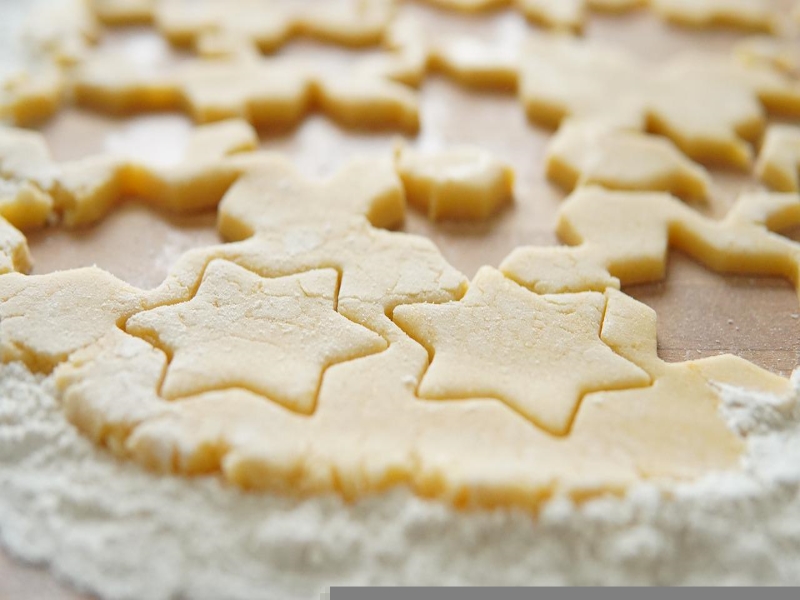
3. Pastry Flour
With 7.5–9.5% protein, pastry flour has the second-lowest gluten protein percentage of all the flours, holding together with slightly more strength than cake flour while still producing flaky crusts as opposed to hard or crispy ones.
The middle ground between all-purpose flour and cake flour is pastry flour. Professional bakers adore its perfectly balanced flakiness and tenderness while retaining structure, thanks to its finely milled texture and protein content that ranges between eight and nine percent.
It is frequently used to make pastries, pie crusts, cookies, crackers, croissants/puff pastry dough, and cake because it can produce highly flaky, soft baked items.
In a 1:1 ratio, you can use pastry flour in place of all-purpose flour. If pastry flour is required but you don’t have any on hand, you can omit 2 tablespoons of all-purpose flour and substitute 2 teaspoons of cornstarch. Simply add 2 tablespoons of cake flour to the recipe if you have it but don’t have any pastry flour.
You can keep your pastry flour for one to two years in a cold, dry environment.
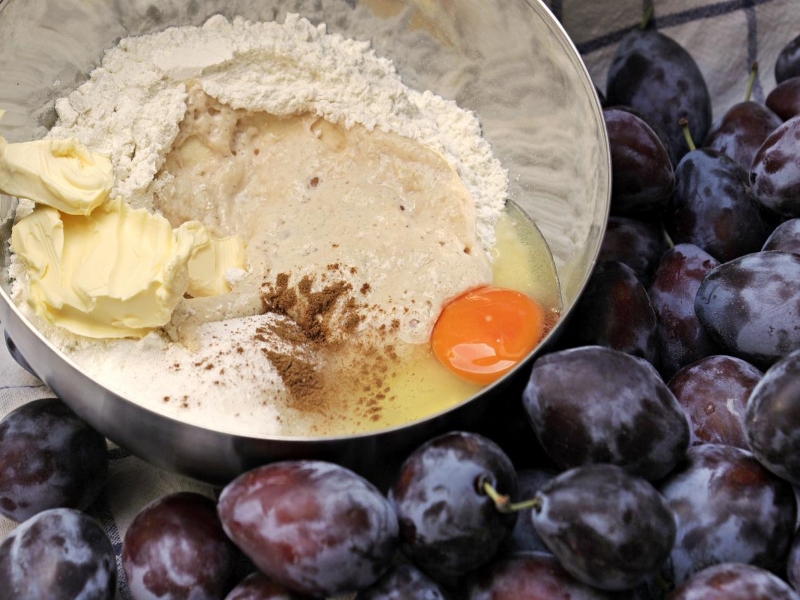
4. Cake Flour
Cake flour is milled to a very fine texture and has the least protein content, around five to eight percent, of any wheat flour. Less structure and less gluten result in soft and moist food.
You should choose low-protein cake flour to make the most tender cakes. It typically contains 5–8% protein, which means that it has a lower capacity to create gluten bonds.
Although it can also be used to make pancakes, muffins, and bread, cakes are its most popular usage.
When kept in a sealed glass or plastic container, cake flour can last for up to eight months. If kept sealed in your freezer, it will last forever.
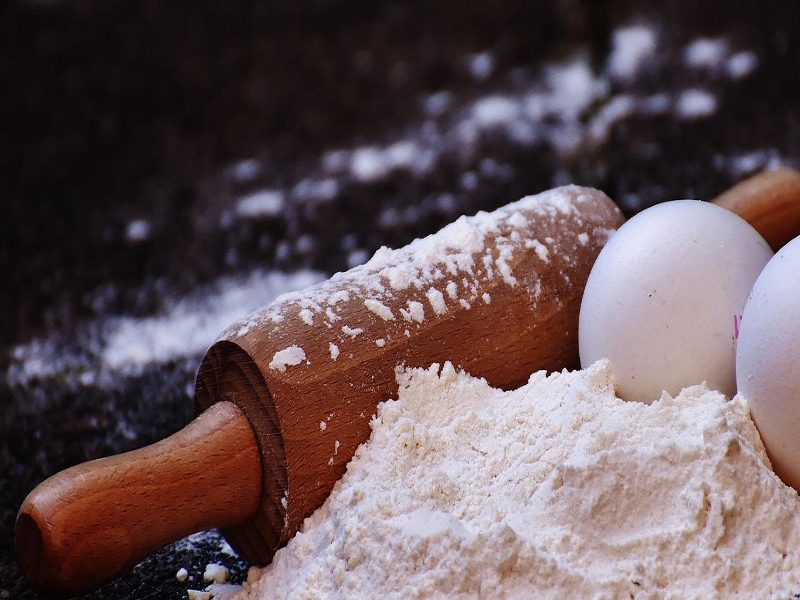
5. Self-Rising Flour
Self-raising flour is commercially available in English-speaking regions and contains chemical leavening agents already. Additionally, it is probably pre-salted in America, but not in Britain. Because the additional components are dispersed uniformly throughout the flour, baked items rise consistently as a result. Typically, this flour is used to make sponge cakes, scones, muffins, biscuits, pizza crusts, sugar cookies, pancakes etc. In 1845, Henry Jones received a patent for his creation. If self-raising flour is required in a recipe but is not readily available, the following alternative is acceptable: 1 cup (125 g) of unbleached flour, 3 grams of baking powder per teaspoon, a sprinkle to a quarter teaspoon (1 g or less) of salt.
So basically, self-rising flour is finely ground flour with salt and leavener added, notably baking powder. It is made from soft wheat and contains around 9% of protein. Although self-rising flour produces lofty, light baked goods, it can’t be substituted as easily as regular flours because the additional ingredients may change other recipe quantities.
You have the option to buy self rising flour at you local grocery store, or make your own.
The shelf life of this type of flour is only between four and six months due to the presence of baking powder. When baking powder is called for in a recipe, you should always make sure it is fresh because it loses its potency quickly after being opened.

6. Gluten-Free Flours
People who suffer from gluten-related illnesses, including coeliac disease, non-celiac gluten sensitivity, or wheat allergies, can use flours that don’t contain gluten. There are a lot of gluten-free flours available in the market today. Some of the common gluten-free flours are listed below.
Almond Flour
Almond flour is free of gluten, low in carbohydrates, and rich in fiber and good fats.
This gluten-free flour can be substituted for all-purpose flour 1:1 but the results may vary because it is made from finely ground blanched almonds. The absence of gluten will impact the overall form of baking , especially for non-yeasted recipes, typically resulting in much less rising and more spreading. Because of the natural lipids present in almonds, almond flour naturally imparts a lovely almond flavor to the final result as well as moisture and richness.
In recipes used by individuals following particular gluten free diets, almond flour is increasingly substituting for typical wheat flour. The baked goods are more dense and significantly flatter even though it can be used in baking in the same amounts as ordinary wheat flours.
In the freezer or refrigerator, almond flour can be stored in a glass or plastic container for nine months.
Amaranth Flour
Amaranth grain is processed to make a flour called amaranth flour. It was initially grown by the Aztecs and was widely utilized in meso-American cuisine prior to the arrival of the Spanish. In specialty food stores, it is getting more and more popular, due to its high protein content and gluten-free status.
The amino acids methionine and lysine found in the ground seeds produce a highly appreciated variety of flour. Its antioxidant properties were also examined and confirmed.
To increase the gluten-free and other healthful qualities of all-purpose flour, this kind of flour is used in addition to it.
A significant flour manufacturer evaluated the effects of adding amaranth flour to all-purpose flour in amounts ranging from 25% to 50%. They determined that 50% for pancakes and banana bread and 25% for scones, cinnamon bread, and muffins were the right quantities.
When kept in a freezer-safe container with a tight seal, amaranth flour can last for six months.
Buckwheat Flour
In the US, a lot of pancakes have buckwheat flour as an ingredient. It is also used to manufacture the well-known soba noodle in Japan. Blinis, Russian pancakes that are commonly served with caviar, are made with buckwheat flour. In Brittany, buckwheat flour is also used to make crêpes bretonnes.
Buckwheat flour, which is naturally gluten-free and classified as a “pseudocereal” since its grains are used in cooking in the same ways as those found in the cereal family, is not manufactured from wheat at all. Unless you prefer edible hockey pucks, it shouldn’t be used alone in baking; however, you can substitute some of it for all-purpose flour to add taste and nutritional content, or use it as part of a gluten-free baking blend.
Oat Flour
Since individuals started avoiding gluten, oat flour has grown in popularity. Oats are ground into a fine powder to create oat flour, which is gluten-free because it is not made from wheat.
As it performs similarly to wheat flour, oat flour is well-liked as a replacement for all-purpose flour. Although inherently gluten-free, double-check the packaging to be sure, production-related cross-contamination can be an issue.
You can either create your own oat flour by grinding 1 1/4 cups of rolled oats in a blender or buy it from most grocery shops or online.
You can still make muffins, breads, pancakes, waffles, cookies, and cakes by using unique oat flour-specific recipes.
To lessen the amount of gluten in the recipe, you can use oat flour for up to 30% of the wheat you are using in your own modifications.
Your oat flour will last up to a year if you store it in a sealed container and keep it somewhere dry and cool.
Rice Flour
Another variety of gluten free flour is rice flour. Rice flour originated in China, Bangladesh, India, and Indonesia where 90 percent of the rice is from. Rice flour was introduced to our culture in the 1980s and it became popular for use in baking.
Rice kernels are processed into rice flour. It is frequently used in Western nations, particularly by those with diseases linked to gluten.
Rice flour comes in two varieties: white and brown. Both are used to create gluten-free breads. Brown rice flour has a delicate sweet and nutty flavor, while white flour has practically little flavor. Despite having nearly identical calorie counts, brown rice offers more protein, fiber, and folate than white flour. White rice flour has lesser nutritional value than brown rice flour.
You must use rice flour in recipes that specifically call for it since rice flour cannot be substituted for any other kind of flour. Rice flour can be used in recipes for muffins, cakes, and other sweet baked products.
If maintained in your freezer and stored in an airtight container, both varieties of flours have a shelf life of six months to a year.
Chickpea Flour
Also known as s gram flour or besan. Chickpea flour, which is high in protein and one of the few gluten-free substitutes that binds effectively after being hydrated, is perfect for batters that need to cook quickly. Additionally, it has a rich, nutty flavor that works well in both savory and sweet recipes.
Corn Flour
Makai ka atta, or corn flour, is a common ingredient in foods in the Punjab regions of India and Pakistan as well as the Southern and Southwestern US, Mexico, and Central America. Typically, cornmeal is the name for coarse whole-grain corn flour. Masa harina, also known as corn flour that has been processed with food-grade lime, is a finely ground corn flour that is used to produce tortillas and tamales in Mexican cuisine.
Corn flour is another gluten-free flour. Gluten-free corn flour can be used to make soft baked items with mouthwatering corn flavor. Corn flour, like the majority of gluten-free choices, won’t give baked goods the same rise as options that contain gluten.
Potato Flour
Potato flour, which is frequently mistaken for potato starch, is made from whole potatoes that have been peeled, cooked, and pounded into a powder. As a result, it contains part of the potato’s fibers and protein. It is off-white with a faint hint of yellow. These dried, dehydrated potatoes, often known as instant mashed potatoes, can also be in the form of flakes or granules. Potato flour is cold-water soluble but is rarely used due to its tendency to be heavy.
Used for gravies, pancakes, sauces, soups, gluten-free and regular flour blends, and waffles.
Tapioca Flour
The cassava plant’s root produces tapioca flour, which is used to make breads, pancakes, tapioca pudding, a savory porridge known as fufu in Africa, and as a starch.
Due to its great absorption capacity, tapioca flour aids in giving baked goods structure. When used by itself in baking, the outcome will be thick and sticky.
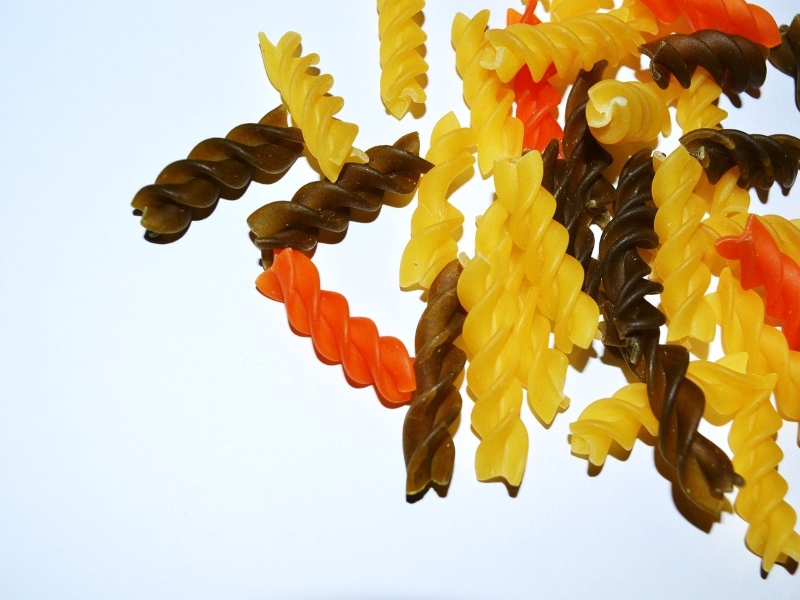
7. Semolina Flour
Durum wheat is used to mill semolina flour. It is yellow in color and has a nutty flavor. It has a significant amount of gluten and between 12 and 13 percent protein. Semolina flour is used in pasta and couscous, so even if you’ve never baked with it, you’ve undoubtedly eaten it. A dry, elastic dough that maintains its shape during baking can be made thanks to the gluten component.
It can be used to make fresh pasta, gnocchi, and focaccia.
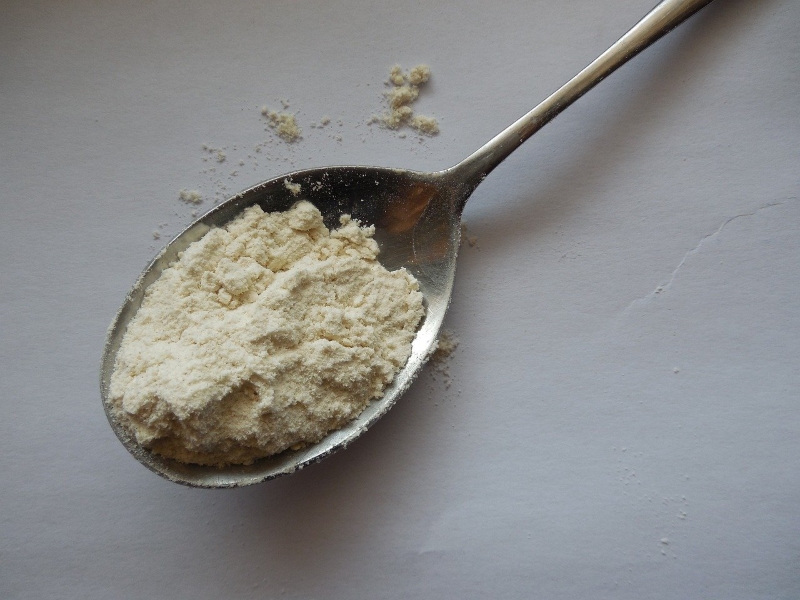
8. White Whole Wheat Flour
White whole wheat flour is milled in the same manner as regular whole wheat flour, but it begins with hard wheat, a harder variety of hard wheat that is paler. It tastes softer but has a similar amount of protein (about 14%). It won’t significantly alter the flavor of your baked items while offering the same health advantages as whole wheat flour. Basically, winter wheat or hard spring wheat is the source of white whole wheat flour.
This kind of flour is frequently used in baking goods like bread, muffins, and cookies.
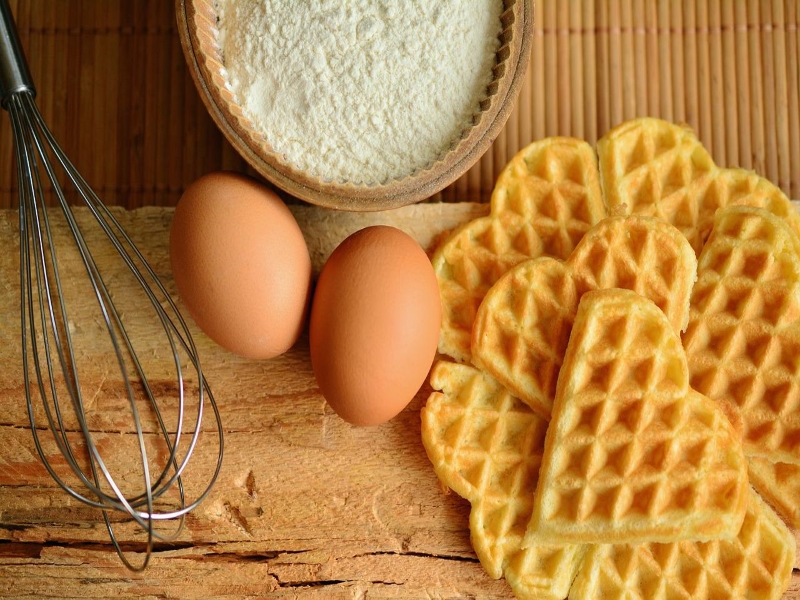
9. Spelt Flour
A type of whole wheat flour milled, spelt flour, is made from spelt grain. Spelt flour acts more like AP flour (all-purpose flour) than traditional whole wheat flour, so you won’t have to worry about dense, heavy results. It also adds a distinctive flavor that is sometimes described as somewhat sweet and acidic.
Use it for sweets like cakes, cookies, crumbles, and muffins. You can explore with substituting up to 50% of the all-purpose flour for bread recipes to enhance flavor and nutrition.

10. All-Purpose Flour (AP Flour)
At 9.5–11.5% protein, all-purpose, “AP flour,” or plain flour has a medium level of gluten protein concentration. Although bread flour and special 00 grade Italian flour are frequently favored for these applications, especially by artisan bakers, they both have an appropriate protein content for various bread and pizza bases. This kind of flour is also used to make several types of biscuits. In addition to the average amount of gluten in AP flour, the term “plain” also implies the absence of any additional leavening agent, as in self-rising flour.
It works for anything, including cookies, flaky pie crusts, pancakes, muffins, brownies, quick breads, and other baked goods.
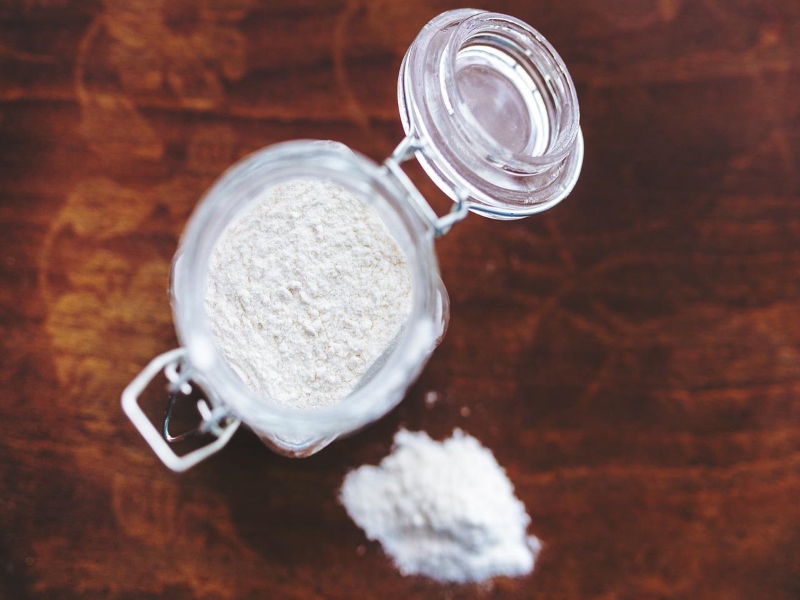
11. Instant Flour
Instant Flour is fine flour, which is essentially a low-protein, finely milled flour that has been dried out and pre-cooked. This makes it perfect for gravies and sauces because it dissolves rapidly and doesn’t form any clumps when introduced to hot liquids. Additionally, it eliminates the need for a preliminary cooking step to eliminate the taste of raw flour, shortening the preparation period. It can be used in pie crusts for a flakier bite and creates a super-crispy breading when battering and frying vegetables or fish, though it can’t be used in place of all-purpose flour in every recipe.
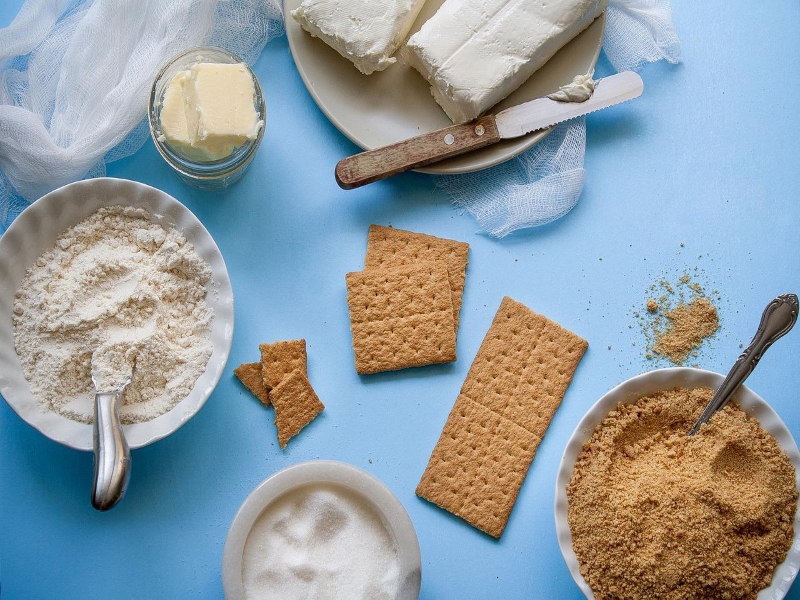
12. Graham Flour
Graham flour is a kind of whole wheat, coarse-ground flour that retains Sylvester Graham’s name. Although it is derived from the same whole grain as traditional whole-wheat flour, graham flour is ground more coarsely. After milling, it is not sifted with a flour dresser. According to a study from 1913, it had a protein level of 12.1%, which was nearly the same as whole wheat flour and only somewhat lower than white wheat flour.
This type of flour can be directly obtained from a flour mill with experience in producing it, as well as at some grocery stores, specialty and gourmet food shops, health food stores, and bakery supply stores.
Graham crackers and other recipes requiring whole wheat flour can be made using it.
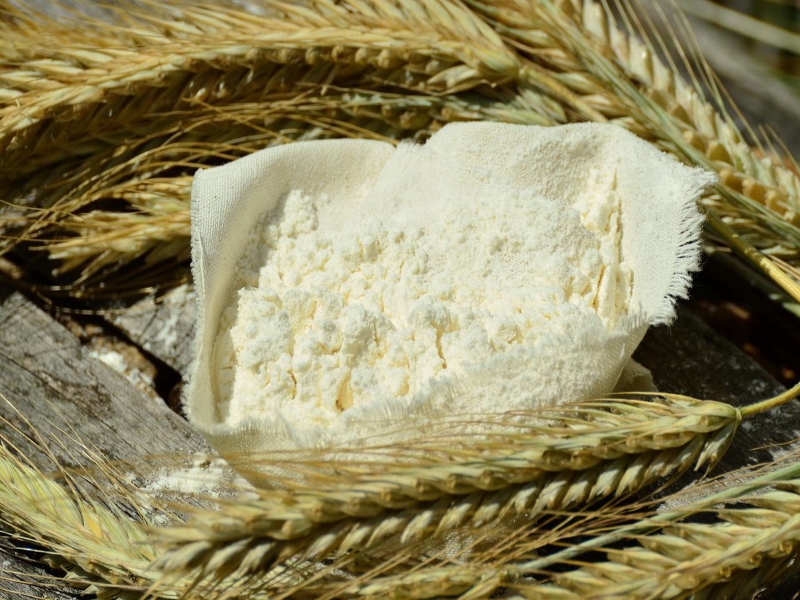
13. Barley Flour
Barley is dried and processed to make barley flour. Barley bread and various breads, including flat bread and yeasted breads, are made from barley flour.
Breads like barley bread are made from barley flour. It is occasionally mixed with wheat flour to create composite flour, which is then used to make several kinds of bread. When combined with wheat flour, it results in a baked good that is deeper in color and has a different flavor. Additionally, barley flour is a component of several specialized recipes.
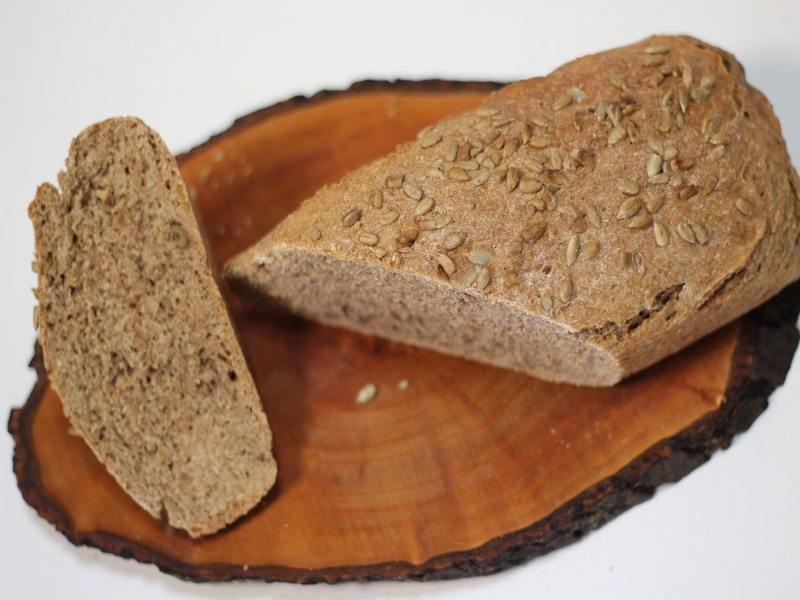
14. Rye Flour
Rye kernels are ground to produce rye flour. Rye and wheat are closely related, however rye contains more soluble fiber and less gluten and protein than wheat flour. It can give baked products more texture and has a fruity, nutty flavor.
This can be used for baking cookies and bread.

